|
|
A busy end to 2022 has moved seamlessly into a January and February packed with project works now fully underway on all sites. A number of baseline surveys have been completed, extensive hydrological assessments have begun and the amazing pistenbully has been out on both mid and north Wales sites removing problematic vegetation.
Here are some of the standout moments in the LIFEquake story since our last newsletter (which can be found here if you missed it!).
LIFEquake Project Newsletter Autumn 2022 (govdelivery.com)
|
|

To accompany our launch event in October 2022, we produced a short video introducing the Crymlyn Bog site; the many challenges of delivering project outcomes there and the many ways LIFEquake interventions will improve this fascinating and varied habitat. Introduced by Senior Project Officer Gareth Thomas the video explains the main historic factors that have affected the bog and its wider supporting landscapes. We’re delighted to be working closely with St Modwens, a major stakeholder on the project, to finalise the access agreements to bring machinery onto the bog and begin the restoration process. We’re also very pleased to have secured the services of leading peatland hydrologist Dr Rob Low who will lead on assessing the movement of water through, on and around the bog.
Here’s the video: Cyflwyno Cors Crymlyn, Prosiect LIFEquake / Introducing Crymlyn Bog, LIFEquake Project - YouTube
|
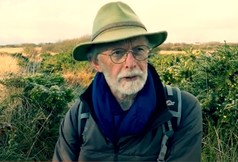
In early January we enjoyed a day with peatland expert John Ratcliffe on a number of LIFEquake project sites in Pembrokeshire. Our sites near to St Davids are collectively called the North West Commons and it was wonderful to gain valuable insight into the Dowrog Common habitat while producing this short video. The Dowrog site can be found at the end of an old Second World War airfield runway and also adjoins land that is part of Dr Beynon’s Bug Farm. Dr Sarah Beynon is heavily involved in a number of important projects to restore this precious habitat – most notably a programme nurturing and boosting the population of devils bit scabius – the vital food and nesting plant for the marsh fritillary butterfly meta populations currently in decline in this part of Pembrokeshire.
Here’s the video: (5) Comin Dowrog gyda John Ratcliffe / Dowrog Common with John Ratcliffe - YouTube
|
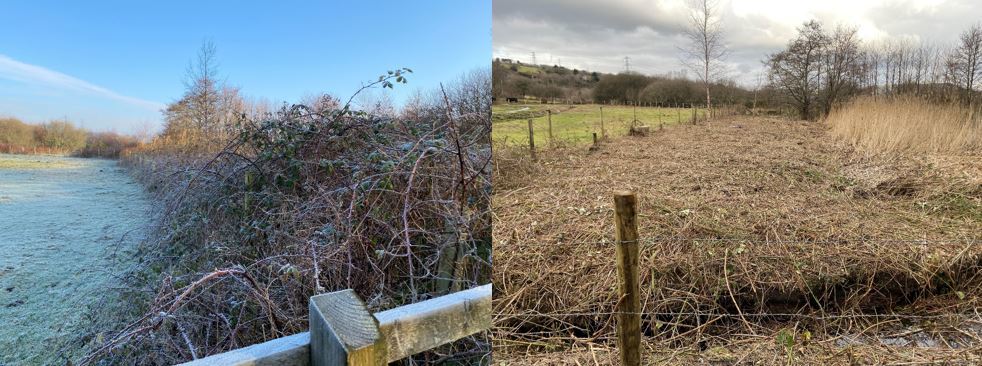
Contractors have been busy clearing areas of bramble and gorse in readiness for planned himalayan balsam control this summer. Dense areas of himalayan balsam were identified around Crymlyn bog during INNS (Invasive, non-native species) mapping which without these levels of control, would likely spread further into the bog impacting vegetation, pollinating species and risking the designation of the sites SAC (Special Area of Conservation) and SSSI (Site of Special Scientific Interest). Himalayan balsam can spread rapidly once present with each plant producing up to 800 seeds which can be spread up to 7 metres when the seed pods explode in late summer. The seeds can also be spread by flowing water and animals thus making it extremely difficult to eradicate completely. This winter we have focused on preparing the identified sites within the NNR (National Nature Reserve) by cutting back 'scrub' vegetation to ground level. This will make these areas easily accessible to control by strimming and hand pulling.
|
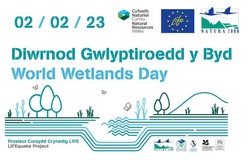
To celebrate global wetland habitats and our own contribution to the restoration and maintenance of these amazing landscapes we held a guided walking tour of our Crymlyn Bog site. The tour was a chance for visitors to enjoy a close-up view of the site and hear Senior Project Officer Gareth explain the different ways LIFEquake interventions will positively impact the quaking bog and supporting landscape. The tour, which will ever-evolve due to the changing of seasons and physical developments to the site, will be regularly offered to members of the general public to attend and we also welcome enquiries from groups who might wish to attend a bespoke tour of their very own.
|

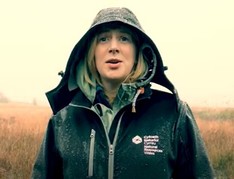
LIFEquake Communications & Engagement Officer Mark made his first visit to our North Wales project sites in early January. Our Corsydd Eifionydd sites are made up of Cors Gyfelog, Cors Graianog, Cors y Wlad and Cors Llanllyfni. It was a huge pleasure to meet with colleagues, land managers, local farmers and wider peatland experts to get a full flavour of North Wales bogs. We took the opportunity to meet with Dr Rhoswen Leonard and Dr Peter Jones from the National Peatland Action Programme and in collaboration with other peatland partners we gathered a lot of bilingual video content that will be shared between all networks and channels in the coming months and years. Here is Dr Rhoswen Leonard giving an overview of NPAP and peatland programmes hosted by NRW. This video was posted and widely appreciated on World Wetlands Day.
Here is the video: (5) World Wetlands Day - National Peatland Action Programme - YouTube
|
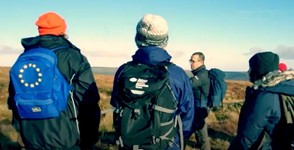
The entire LIFEquake project team, along with members of the Welsh Raised Bogs team visited colleagues in Brecon Beacons National Park in later December. The visit was another hugely enjoyable and valuable experience in sharing good practice in peatland restoration techniques. We were welcomed by Brecon Beacons National Park Peatland Officer Sam Ridge on upland site Waun Fach. Sam showed us the blanket bog habitat they’ve spent many years restoring and told us of their plans to maintain water levels on the bog and support the growth of important vegetation types.
Here’s the video of the day: (5) Ymweliad LIFE ag Aberhonddu / LIFE Brecon Visit - YouTube
|
Search 'LIFEquakingbogs' on Facebook and Twitter.
 |
|
This work has been funded by an EU LIFE programme grant and Natural Resources Wales, Snowdonia National Park, Pembrokeshire County National Park and Welsh Government (LIFE20 NAT/UK/000137). |

|
|
|
|